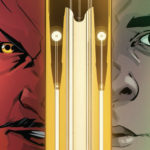
 Here’s the thing: this week’s The Thing #1 shines a spotlight on the Ever-Lovin’ Blue-Eyed Ben Grimm. Unfortunately for him, he doesn’t seem to be doing so great.
Here’s the thing: this week’s The Thing #1 shines a spotlight on the Ever-Lovin’ Blue-Eyed Ben Grimm. Unfortunately for him, he doesn’t seem to be doing so great.
The Thing is a brand-new story set in a classic past era of the Marvel Universe, which isn’t specified but most likely sometime in the 1960s or ’70s. (Thanks to the sliding timescale of this universe, though, it would actually be closer to 2010-ish by now. Comics!) When we find him, Ben returns from a trip to discover that the Baxter Building is completely empty—save for their trusty mailman Willie Lumpkin—and his girlfriend Alicia Masters is too busy to return his calls. His bad day escalates to imprisonment in a high-tech facility, but as he soon finds out, that’s not even the worst of it for him this week…
Setting new stories in a past era, particularly in an established world like this one, can be a tricky proposition for both the writer and the audience. For the former, they have to closely mirror an older age while still making the material itself feel contemporary and not outdated, while the latter has to remind themselves that they’re following an older version of a character they know and have followed through various developments. This means some aspects lose a little bit of mystery or tension (e.g. Ben’s relationship troubles with Alicia, when we know they eventually get married), but in this issue’s favor, I think the creative team does a good job of making a readable story with enough modern elements to hook the reader.
Tom Reilly’s art does more of the heavy lifting in transporting the reader to “the past” than Walter Mosley’s script does, but I think the latter at least nails enough of the tone of older comics to give Reilly the material to work with. Reilly uses a faux-retro style that calls to mind the vibe of comics from this nebulous era without actually resembling it, and superstar color artist Jordie Bellaire manages to make it look simultaneously classic but updated. The issue is broadly bright and colorful, but the way color is used varies from page to page: a dream sequence is rendered in gauzy, monochromatic reds; scenes set in broad daylight have clean delineation between lines; others set at nighttime are covered in cool tones to convey darkness. Bellaire’s work here really does show how important a color artist’s job is in capturing mood, but having a good script and strong visuals help take it over the line.



![[REVIEW] WITH STARS AND STRIKES NEW YORK’S FINEST ARRIVE IN THUNDERBOLTS # 1](https://geekd-out.com/wp-content/uploads/2022/08/iTn3nco7mDLqhUiS5gzXEd-150x150.jpg)
